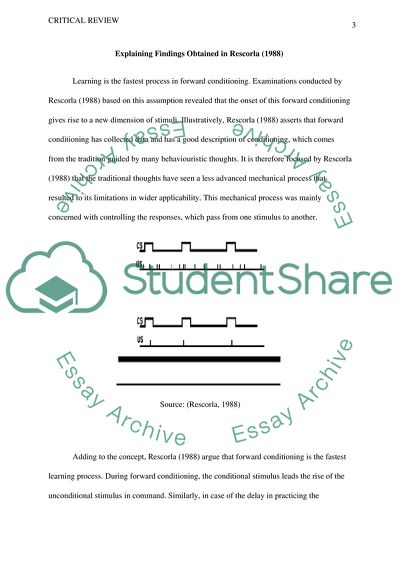Cite this document
(Write a critical review on Pavlovian Conditioning: Its not what Literature Example | Topics and Well Written Essays - 1750 words, n.d.)
Write a critical review on Pavlovian Conditioning: Its not what Literature Example | Topics and Well Written Essays - 1750 words. https://studentshare.org/psychology/1863248-write-a-critical-review-on-quotpavlovian-conditioning-its-not-what-you-think-it-isquot-robert-a-rescorla
Write a critical review on Pavlovian Conditioning: Its not what Literature Example | Topics and Well Written Essays - 1750 words. https://studentshare.org/psychology/1863248-write-a-critical-review-on-quotpavlovian-conditioning-its-not-what-you-think-it-isquot-robert-a-rescorla
(Write a Critical Review on Pavlovian Conditioning: Its Not What Literature Example | Topics and Well Written Essays - 1750 Words)
Write a Critical Review on Pavlovian Conditioning: Its Not What Literature Example | Topics and Well Written Essays - 1750 Words. https://studentshare.org/psychology/1863248-write-a-critical-review-on-quotpavlovian-conditioning-its-not-what-you-think-it-isquot-robert-a-rescorla.
Write a Critical Review on Pavlovian Conditioning: Its Not What Literature Example | Topics and Well Written Essays - 1750 Words. https://studentshare.org/psychology/1863248-write-a-critical-review-on-quotpavlovian-conditioning-its-not-what-you-think-it-isquot-robert-a-rescorla.
“Write a Critical Review on Pavlovian Conditioning: Its Not What Literature Example | Topics and Well Written Essays - 1750 Words”. https://studentshare.org/psychology/1863248-write-a-critical-review-on-quotpavlovian-conditioning-its-not-what-you-think-it-isquot-robert-a-rescorla.


